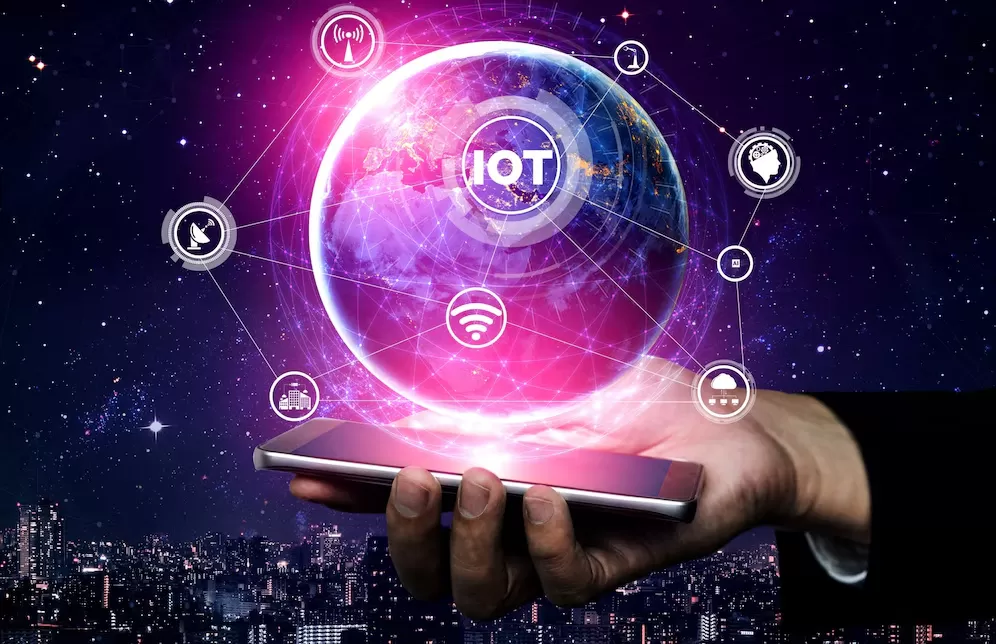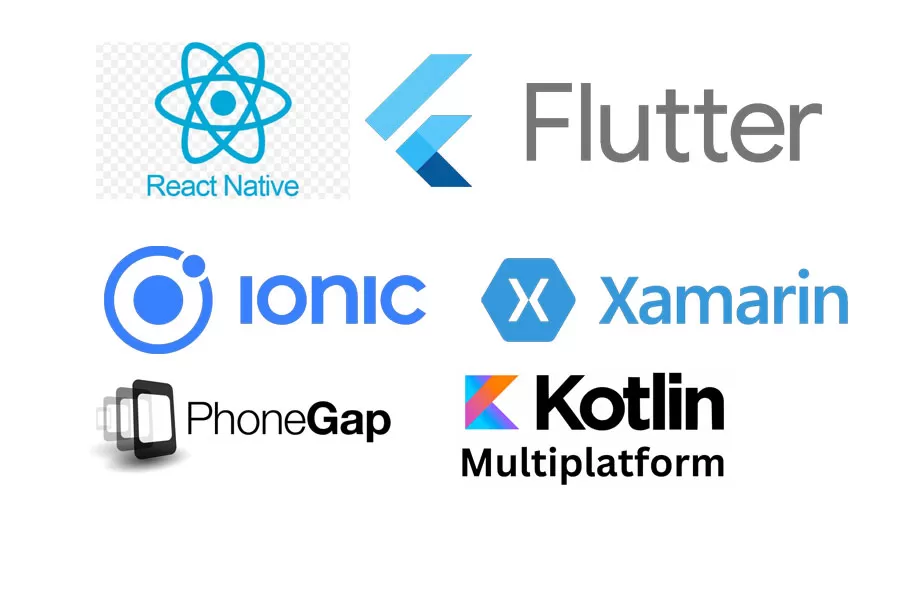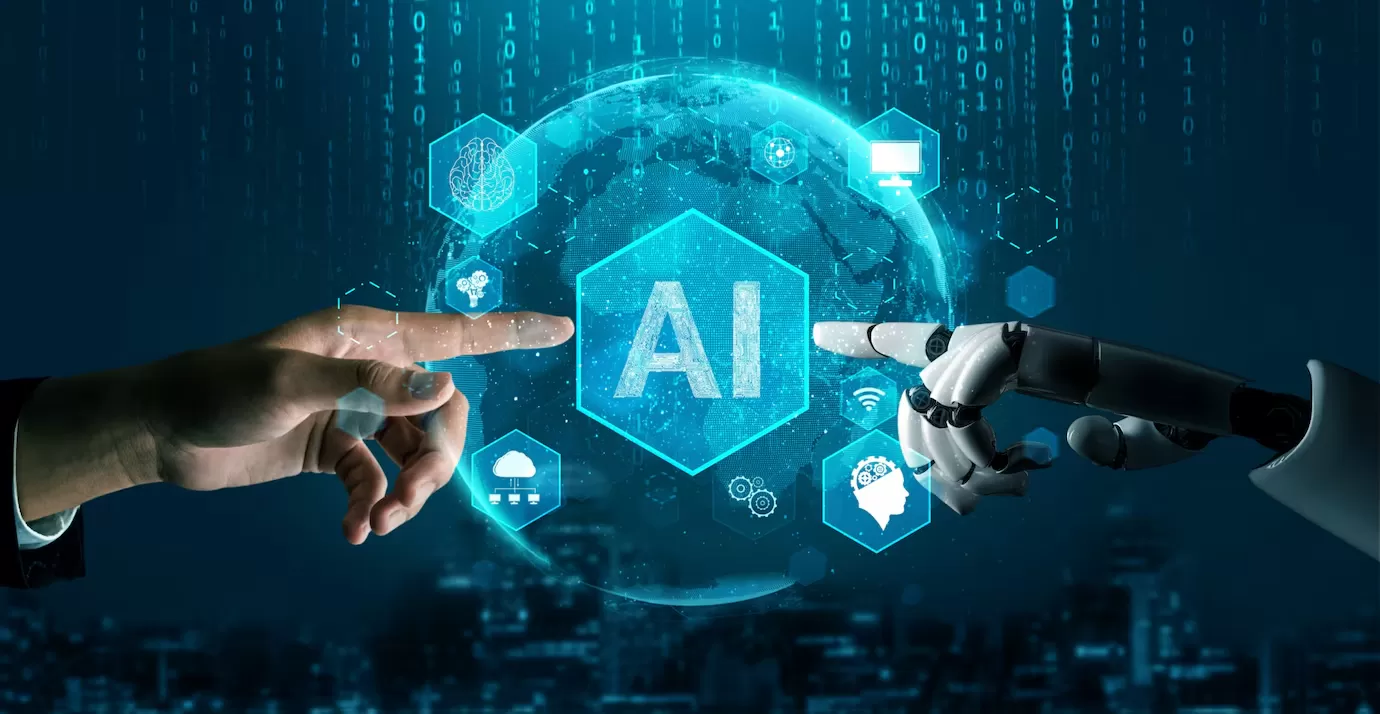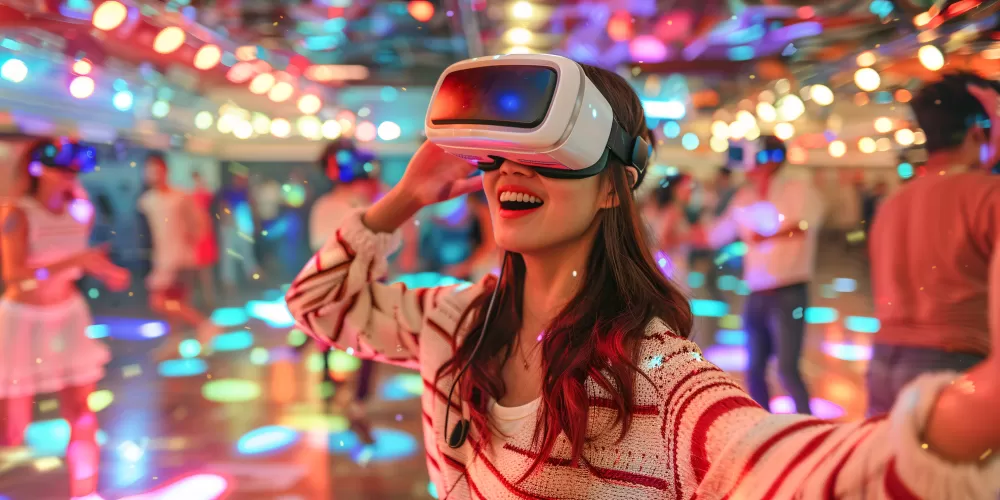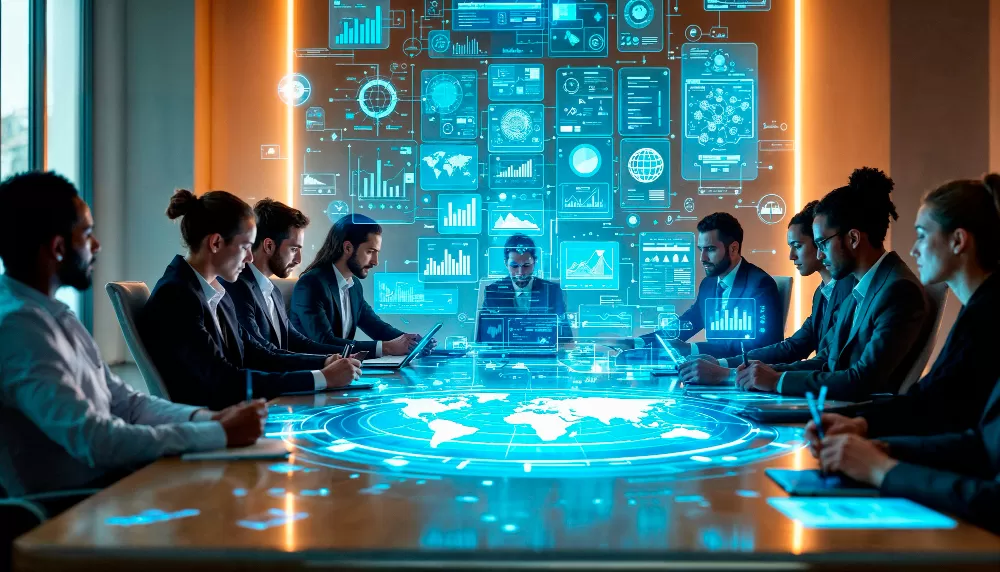Key Industries Transformed by IoT Apps with AI
1. Healthcare
The healthcare industry is one of the most impacted by the combination of IoT and AI. With IoT-enabled medical devices and AI-driven analytics, healthcare providers can deliver more personalized, efficient care.
Examples:
- Remote Monitoring: IoT devices, such as wearables, track patient vital signs like heart rate, blood pressure, and glucose levels. AI analyzes this data to detect anomalies and notify healthcare professionals of potential health issues, enabling early diagnosis and timely intervention.
- Predictive Analytics: AI algorithms analyze historical data from IoT devices to predict patient outcomes and personalize treatment plans.
- Robotics: AI-powered robots, equipped with IoT sensors, can assist in surgeries, reducing human error and improving precision.
Impact: Enhanced patient care, reduced hospital readmissions, and cost-effective treatment plans.
2. Manufacturing
The manufacturing industry is undergoing a major transformation with the advent of smart factories powered by IoT and AI. These technologies optimize production processes, improve product quality, and reduce operational costs.
Examples:
- Predictive Maintenance: IoT sensors installed in machines can monitor their health and send alerts when they need maintenance. AI analyzes these data to predict potential failures, allowing manufacturers to perform maintenance before machines break down, reducing downtime and repair costs.
- Smart Supply Chains: AI-powered IoT apps can track materials in real-time, optimize inventory levels, and predict demand trends, leading to more efficient supply chain management.
- Automated Quality Control: IoT cameras and sensors monitor production lines, while AI detects defects and inconsistencies in products, ensuring higher-quality output.
Impact: Reduced downtime, improved production efficiency, and cost reduction.
3. Agriculture
IoT and AI are making agriculture smarter, driving efficiencies and enabling more sustainable farming practices. Through smart farming techniques, farmers can monitor crops and livestock, optimize resources, and increase yields.
Examples:
- Precision Agriculture: IoT sensors track soil moisture, temperature, and nutrient levels. AI algorithms process this data to provide real-time recommendations for irrigation, fertilization, and pesticide use, improving crop yield and reducing waste.
- Livestock Monitoring: Wearable IoT devices on animals monitor health metrics, such as body temperature and activity levels. AI processes this data to detect early signs of disease or distress, enabling proactive care.
- Automated Machinery: IoT-enabled agricultural machinery, such as tractors and harvesters, can be monitored and controlled remotely using AI to optimize their performance.
Impact: Improved crop yields, reduced resource usage, and better livestock management.
4. Transportation and Logistics
The transportation and logistics industry benefits greatly from IoT and AI integration by enhancing route optimization, vehicle tracking, and supply chain management.
Examples:
- Fleet Management: IoT sensors track the location, speed, and fuel consumption of vehicles in real-time. AI uses this data to optimize routes, reduce fuel consumption, and prevent accidents.
- Autonomous Vehicles: IoT-powered self-driving cars and trucks use AI to navigate and make decisions, making transportation safer and more efficient.
- Smart Warehouses: IoT sensors track inventory, monitor warehouse conditions, and ensure product safety. AI optimizes storage, retrieval, and order fulfillment processes, leading to faster deliveries and more efficient operations.
Impact: Reduced transportation costs, increased delivery speed, and enhanced logistics efficiency.
5. Retail
The retail industry is embracing IoT and AI to offer personalized customer experiences, optimize inventory management, and improve supply chain operations.
Examples:
- Smart Stores: IoT-enabled devices such as cameras, smart shelves, and sensors track customer behavior and inventory levels. AI analyzes this data to provide personalized recommendations and automate stock management.
- Predictive Analytics: AI processes customer data from IoT sensors and point-of-sale systems to predict future purchasing behavior, allowing retailers to optimize inventory levels and product placement.
- Customer Service: AI-powered chatbots integrated with IoT devices help retailers offer instant customer support, answer questions, and facilitate purchases.
Impact: Enhanced customer satisfaction, optimized stock levels, and personalized marketing strategies.
6. Energy and Utilities
The energy sector is benefiting from IoT and AI by improving energy efficiency, sustainability, and smart grid management.
Examples:
- Smart Grids: IoT sensors monitor the performance of energy grids, detecting faults and ensuring optimal distribution. AI analyzes data to balance energy supply and demand in real time, improving the efficiency of the grid.
- Energy Consumption Optimization: IoT devices in homes and buildings monitor electricity use. AI apps analyze this data to suggest energy-saving measures, helping both businesses and consumers reduce energy costs and their carbon footprint.
- Renewable Energy Management: AI optimizes the performance of renewable energy sources (e.g., solar panels, wind turbines) by predicting energy output and managing grid integration.
Impact: Reduced energy waste, lower operational costs, and increased sustainability.
7. Smart Cities and Urban Development
The concept of smart cities is growing rapidly, where IoT and AI work together to improve urban living conditions and enhance the efficiency of city operations. The integration of IoT devices in infrastructure, public services, and transportation systems helps optimize resources, reduce costs, and improve citizens' quality of life.
Examples:
- Smart Traffic Management: IoT sensors placed in traffic signals, roads, and vehicles collect real-time data on traffic patterns. AI analyzes this data to adjust traffic light timings, optimize road usage, and minimize congestion, improving traffic flow.
- Waste Management: IoT-enabled trash bins send alerts when they are full, while AI can predict waste collection routes, reducing operational costs and improving sanitation services.
- Smart Lighting and Energy Use: Streetlights equipped with IoT sensors adjust lighting based on ambient light levels and traffic, reducing energy consumption. AI can further optimize these systems based on predictive analytics.
Impact: Increased sustainability, reduced energy consumption, and enhanced quality of life for urban residents.
8. Finance and Banking
In the finance sector, IoT and AI are enabling smarter financial services, from personalized banking experiences to real-time fraud detection and risk management.
Examples:
- Fraud Detection and Prevention: IoT sensors on banking systems and devices can monitor suspicious activities in real time, while AI algorithms analyze this data to detect unusual patterns and prevent fraud.
- Customer Insights and Personalization: IoT apps can collect user data from various devices (smartphones, wearables, etc.), which is then processed by AI to offer personalized banking recommendations, investment advice, and product offerings based on individual financial behavior.
- Automated Trading: AI can analyze massive amounts of data from IoT devices and market indicators to make predictive investment decisions, enabling automated trading and reducing human error.
Impact: Improved financial security, personalized services, and more efficient decision-making in financial institutions.
9. Retail and Consumer Goods
Retail is being transformed through the combination of IoT and AI, creating more personalized shopping experiences and optimizing supply chains. Smart retail solutions are reshaping how consumers interact with brands and make purchases.
Examples:
- Smart Shelves: IoT-enabled shelves in stores can track stock levels and send alerts when products need to be restocked. AI can analyze customer data to predict what products will be in high demand and optimize shelf management.
- Customer Behavior Analytics: Using IoT sensors in stores, businesses can track customer movements and interactions with products. AI uses this data to personalize marketing efforts, optimize product placement, and tailor promotions.
- Autonomous Checkout: In combination with AI-powered facial recognition and IoT devices, stores can offer seamless checkout experiences where customers can simply walk out with their items, and the payment is automatically processed.
Impact: Enhanced shopping experience, personalized offers, and optimized inventory management.
10. Supply Chain and Logistics
Supply chains are becoming increasingly smart, agile, and predictive thanks to IoT and AI. The power of real-time data collection, combined with AI’s ability to process and analyze it, helps businesses optimize their logistics and supply chain operations in ways that were previously impossible.
Examples:
- Real-time Tracking: IoT devices attached to packages, containers, and vehicles enable businesses to monitor the location and condition of goods throughout the supply chain. AI analyzes this data to forecast delivery times, manage resources efficiently, and detect potential disruptions.
- Inventory Optimization: By integrating IoT with AI, businesses can track stock levels in real-time, identify demand patterns, and predict future needs. This allows for just-in-time inventory management, reducing waste and ensuring that supply matches demand.
- Drone Delivery and Autonomous Vehicles: In logistics, IoT-powered drones and autonomous vehicles can transport goods. AI-driven routing systems help optimize delivery paths for maximum efficiency and faster service.
Impact: Streamlined operations, reduced delivery times, and better resource allocation in logistics and supply chain management.
11. Education
The education sector is increasingly leveraging IoT and AI to create interactive learning environments, enhance student experiences, and improve administrative operations.
Examples:
- Smart Classrooms: IoT-enabled devices, such as smartboards, tablets, and interactive screens, allow real-time student engagement and collaboration. AI helps analyze classroom data to provide feedback on student progress and performance.
- Adaptive Learning Platforms: AI-driven platforms can analyze a student’s learning patterns and provide personalized educational content, adjusting to their individual pace, strengths, and weaknesses.
- Campus Management: IoT sensors in schools or universities can track attendance, monitor facility conditions (e.g., HVAC systems), and improve security by detecting unusual activities. AI analyzes the data to enhance campus operations.
Impact: Personalized learning experiences, efficient administration, and improved student outcomes.
12. Environmental Monitoring and Conservation
IoT and AI are also having a major influence on environmental conservation, helping industries monitor and manage their impact on nature while promoting sustainability.
Examples:
- Pollution Monitoring: IoT sensors placed in urban areas can measure air quality, noise pollution, and water quality. AI analyzes the data in real-time to predict pollution patterns and suggest interventions to local authorities to reduce environmental harm.
- Wildlife Conservation: IoT-enabled collars on wildlife allow researchers to track animal movements, while AI analyzes this data to detect patterns, monitor animal health, and prevent poaching.
- Energy Consumption: AI-driven algorithms help optimize the energy consumption of buildings, factories, and homes, automatically adjusting to reduce waste and make systems more sustainable.
Impact: Enhanced environmental protection, data-driven conservation efforts, and improved sustainability in various sectors.
13. Healthcare and Wellness Industry: AI-Driven Personalized Care
The healthcare and wellness industry is increasingly embracing the power of IoT apps with AI to improve patient outcomes and reduce the cost of care. IoT devices, such as wearables and smart medical tools, provide real-time data on a person’s health status. AI processes this data to provide personalized wellness plans or even enable remote diagnosis.
Examples:
- Chronic Disease Management: IoT devices can track the condition of patients suffering from diseases like diabetes or heart disease. AI algorithms analyze the data and alert healthcare providers when intervention is necessary, enabling personalized treatment plans.
- Mental Health Monitoring: Wearables can detect physiological signs of mental health changes (such as heart rate variability and sleep patterns). AI can then suggest actionable advice or connect individuals with mental health professionals if needed.
- Fitness Tracking: IoT-enabled fitness trackers measure key indicators (steps, heart rate, calories burned), while AI-powered apps provide tailored exercise regimens and nutrition recommendations.
Impact: More effective, personalized healthcare, better monitoring of chronic conditions, and improved wellness outcomes.
14. Real Estate and Property Management
The real estate sector is leveraging IoT and AI for property management, smart homes, and efficient building operations. These technologies are transforming how homes and commercial buildings are maintained, marketed, and operated.
Examples:
- Smart Homes: IoT apps control devices like lights, thermostats, and security cameras in real time. AI learns users' preferences and adjusts settings for energy efficiency, comfort, and security.
- Predictive Maintenance in Commercial Real Estate: IoT sensors can track building systems (HVAC, lighting, elevators), while AI analyzes these signals to predict when repairs or maintenance will be required, improving the lifecycle management of building assets.
- Property Management Automation: AI can analyze tenant behavior, predict lease renewals, and automatically suggest dynamic pricing strategies based on market trends and property conditions.
Impact: Smarter, more sustainable properties, reduced operational costs, and improved tenant satisfaction.
15. Hospitality and Travel
In the hospitality and travel industries, IoT and AI are optimizing the guest experience and improving operational efficiency. Hotels, resorts, and travel agencies are using these technologies to streamline processes and offer personalized services.
Examples:
- Personalized Guest Experience: In hotels, IoT apps allow guests to control room settings (lighting, temperature) via smartphones. AI analyzes guests’ preferences, recommending tailored services, such as in-room dining or entertainment options.
- Efficient Check-In and Concierge Services: IoT-enabled kiosks and AI-powered chatbots allow guests to check in autonomously or interact with a virtual concierge for recommendations, reservations, and service requests.
- Predictive Maintenance for Hotel Assets: IoT sensors can monitor room conditions (e.g., AC, plumbing) to predict when maintenance is required, ensuring that guests experience uninterrupted service.
Impact

